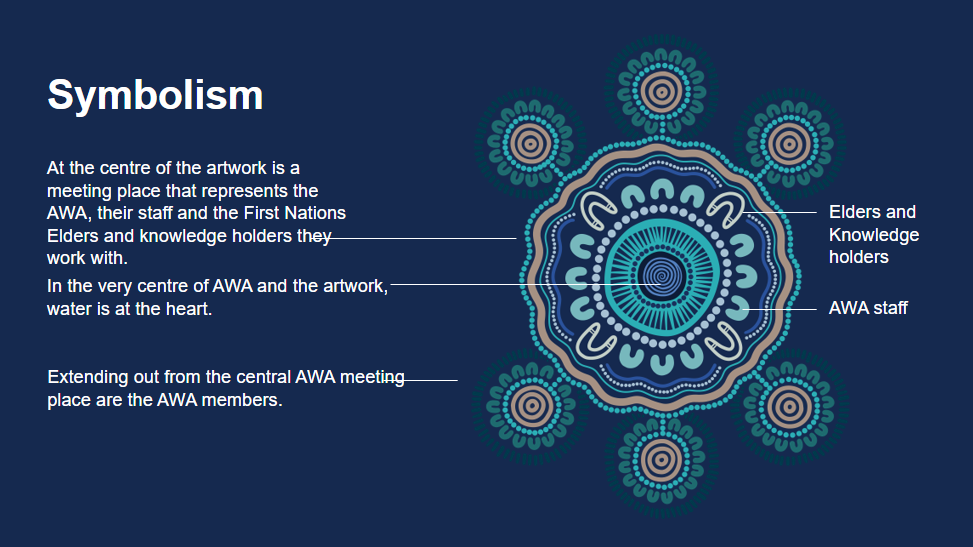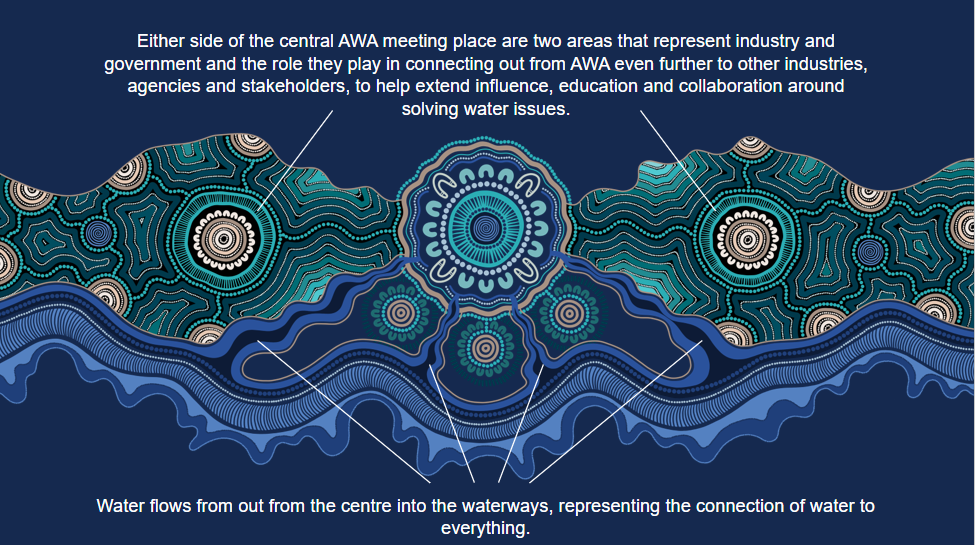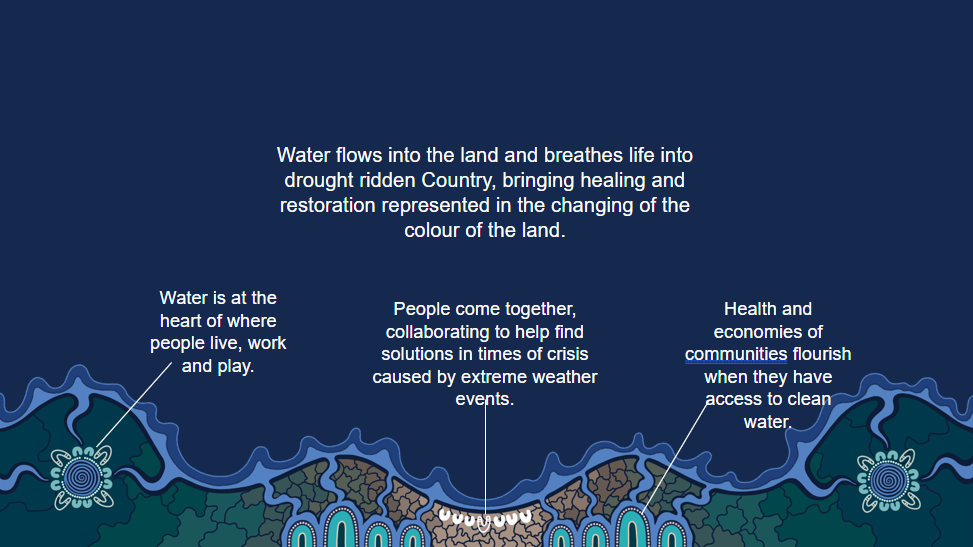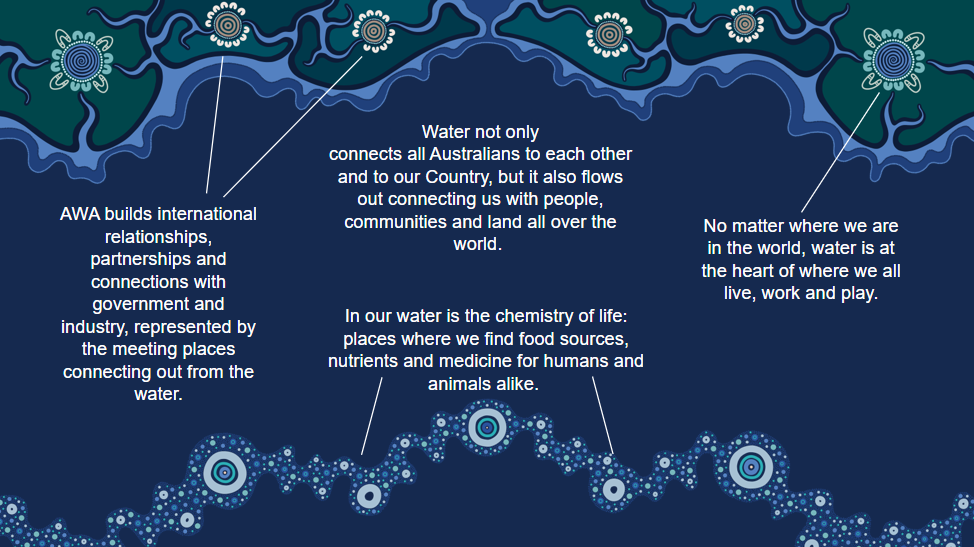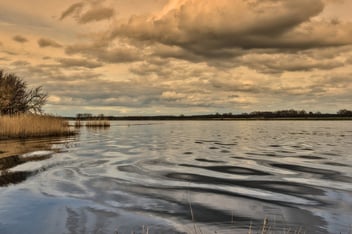At the Heart of All Life - Launching our Reconciliation Action Plan (RAP)
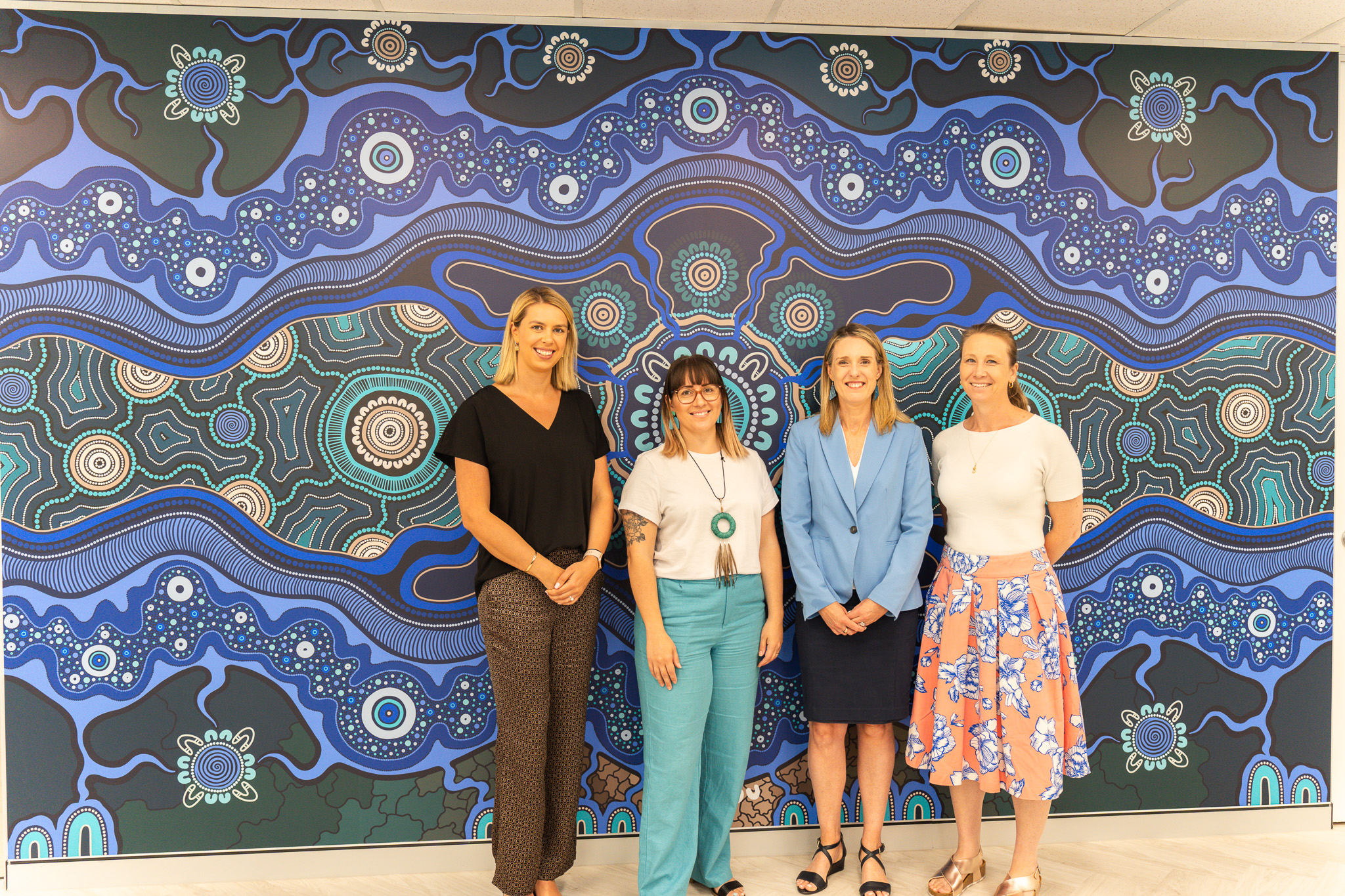
Today, the AWA launches our Reconciliation Action Plan (RAP) ahead of National Water Week (16-22 October), we are overjoyed to share the cover artwork – At the Heart of All Life – created by Gumbaynggirr Bundjalung woman Amy Allerton of Indigico Creative.
“When you connect with a story it connects hearts and minds through shared experiences and emotions. Listening to people's stories: it’s a really key part of achieving things like reconciliation.” Gumbaynggirr Bundjalung woman Amy Allerton, Founder and Director, Indigico Creative.
With the RAP set to outline the aims and proposed actions of the Association as it works towards reconciliation within and throughout the water sector, Allerton said the initial release of the RAP artwork is an important step that starts with story.
Founder and Director of Indigico Creative, Allerton is a graphic designer and contemporary Aboriginal artist – her family’s traditional land is located in the Clarence Valley (NSW) in a rural area called Cangai.
“It’s beautiful mountain Country with amazing crystal clear creeks. We are very lucky that a lot of that land is owned by members of our extended family. We get to visit there, when we can; I think it's the most beautiful place in the world,” Allerton said.
“But my identity is also very strongly founded in Gomeroi Country, culture, dreaming, art and language. I was born and raised in Tamworth, and I still live here with my husband Rick, who also works in the company, and our two children and our two dogs.”
Providing graphic design services around Australia since 2014, Indigico Creative collaborates with businesses and partners with communities to creatively communicate their stories.
“As a graphic artist, I collaborate with organisations, agencies and not-for-profits on Aboriginal digital art commissions. These artworks are generally created in conjunction with the development of a RAP,” Allerton said.
“Working on these artworks is my favourite thing to do. I love it and I am really passionate about it. It's a really personal and important collaboration. I develop quite beautiful and close relationships with the clients I work with on their RAPs.
“Being able to play a role in the long path that organisations and agencies take is not insignificant. I take it very seriously and it's a privilege to collaborate on that journey.”
Story in process
Allerton said her process and artwork is driven by her personal and professional vision that every story is given value and a voice, to revitalise communities, reconnect to culture and restore identities to build a stronger future.
“Our mission is to collaborate with businesses and partner with communities to communicate the stories that bring us together. It's all about telling stories. We believe that stories are what bring us together,” she said.
“Every individual, every business and every community has a story that deserves to be told. That’s what drives and motivates everything that we do.”
Allerton came to collaborate with the AWA on their RAP artwork through a mutual connection: “There is an incredible man called Uncle Phil Duncan. He is a Gomeroi man and I had worked with him in a couple of different ways. He recommended me to the AWA’s RAP artwork project”.
“The AWA invited me to meet all the staff and have a yarn. I told them all about me and my work and we talked about what was about to happen in terms of creating the artwork for their RAP,” she said.
After the consultation process began, Allerton spent time yarning with the Association about who they are and their mission, vision, values and goals for reconciliation.
“I spend a lot of time with this information and go through it very thoroughly. It’s a very collaborative process. I worked closely with the AWA to ensure I got the story and messages right,” Allerton said.
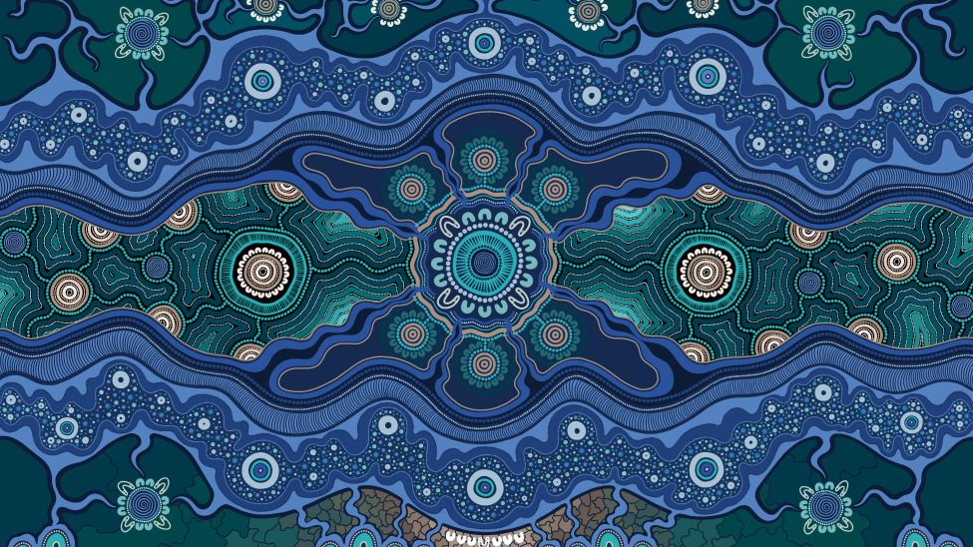
At the Heart of All Life
Accompanying At the Heart of All Life is a description of AWA’s story, one rendered by Allerton to reflect the key elements of the artwork.
“The story goes like this,” Allerton said.
“Water is at the heart of all life, from the beginning of creation to creating a vibrant future. Wherever we live, work and play, water flows within us and all around us, connecting us to each other and to Country. Water is at the heart of ensuring our communities can thrive, our economies can prosper and environments can flourish.
“The power of water is immense and invaluable, bringing healing to our communities, sustainable solutions to our industries and restoration to our ecosystems. As AWA connects us together, we collaborate, innovate and share with Elders, community, government and industry, to fulfill our roles as caretakers for water to ensure that life perseveres.”
Allerton said an important part of the story was that everyone and everything is connected by water, and that AWA also plays a key role as a connector for community and stakeholders, members, government and industry.
“At the centre of the artwork there is a circle, which is a meeting place. The people around the central circle represent AWA. Coming outside of that circle, at the top and the bottom, there are more concentric circles with people around them. They represent AWA members,” she said.
“Coming out again, you’ve got the water that flows into the waterways, representing the connection of water to everything.
“To either side of the central circle, there are two areas that represent industry and government and the role they play in connecting out even further to other industries and agencies, to help extend the influence, education and collaboration around solving water issues.”
Allerton said the water above and below the central circle keeps connecting outward, with the water below connecting to community and environments, and the water above connecting with stakeholders and international connections.
Incorporating the Association’s blues and greens within the design, Allerton said the concentric circles represent the core principle of Aboriginal culture – sustainability.
“Sustainable practice is what Aboriginal culture is based on,” she said.
“When a family has an animal totem, they are not allowed to kill that animal. It's the same for every family. They must protect their totem. We do everything sustainably so that we are never taking too much.
“It's the idea that Country cares for us, and we care for Country. It's a partnership. It's a unifying balance.”
